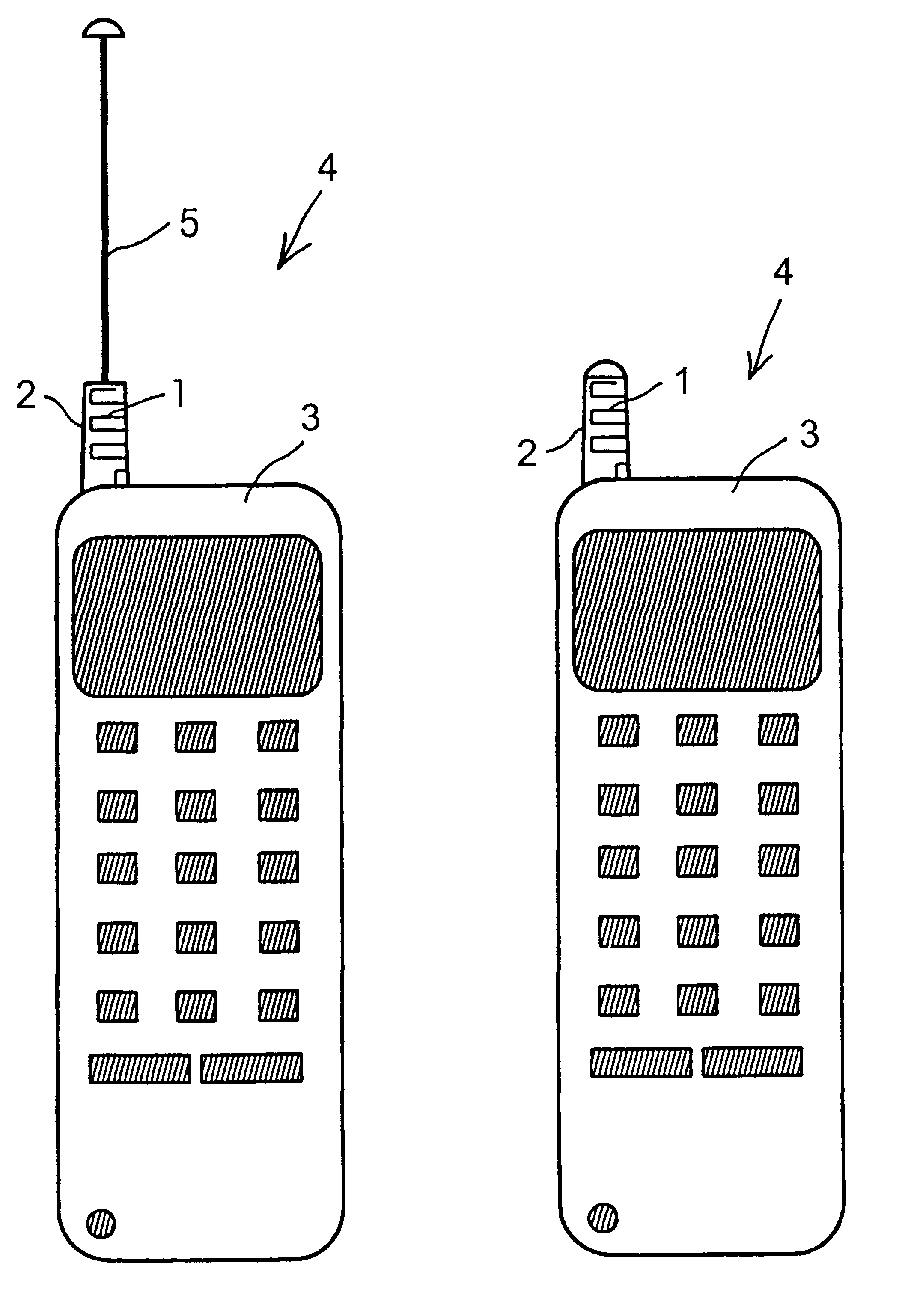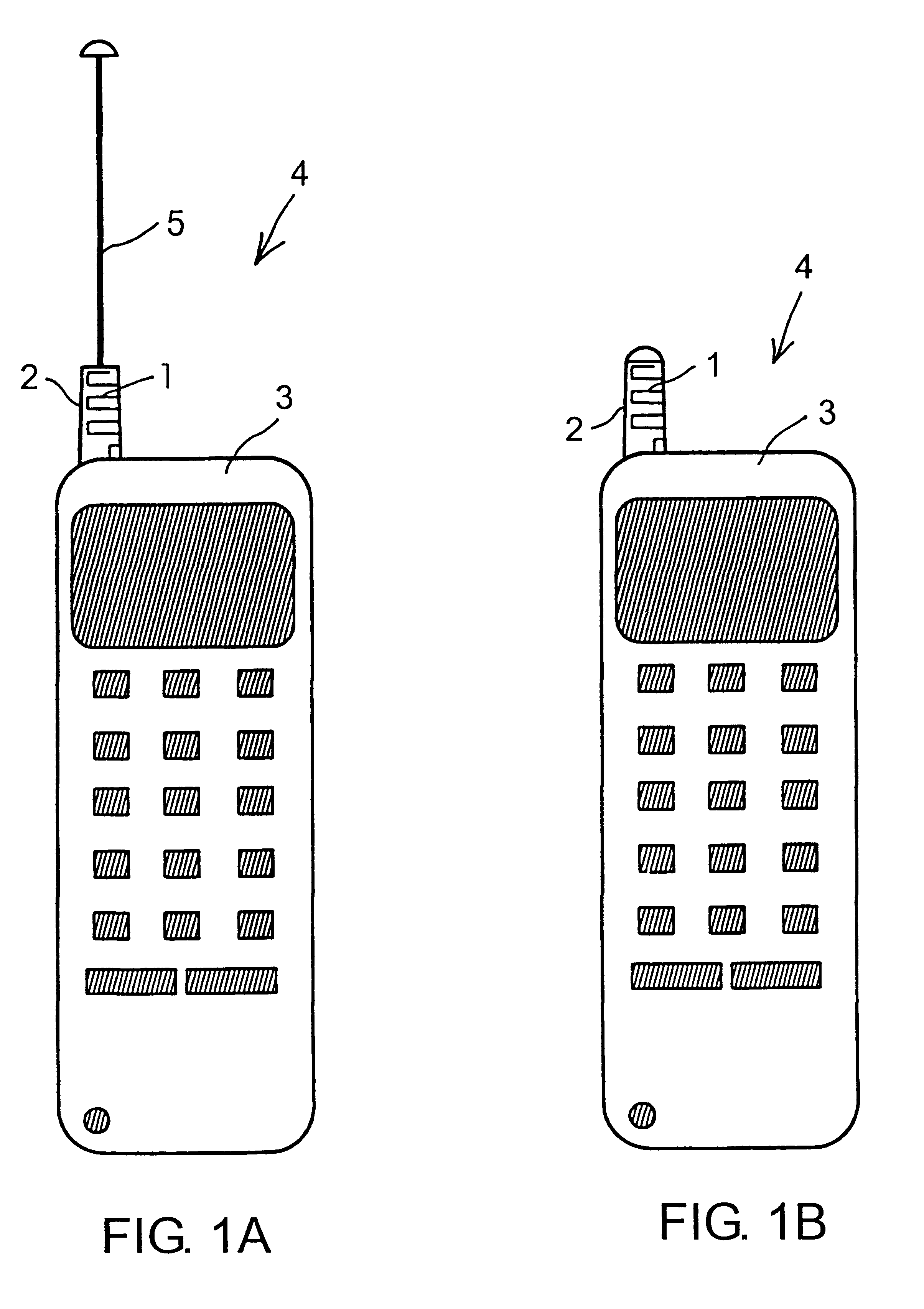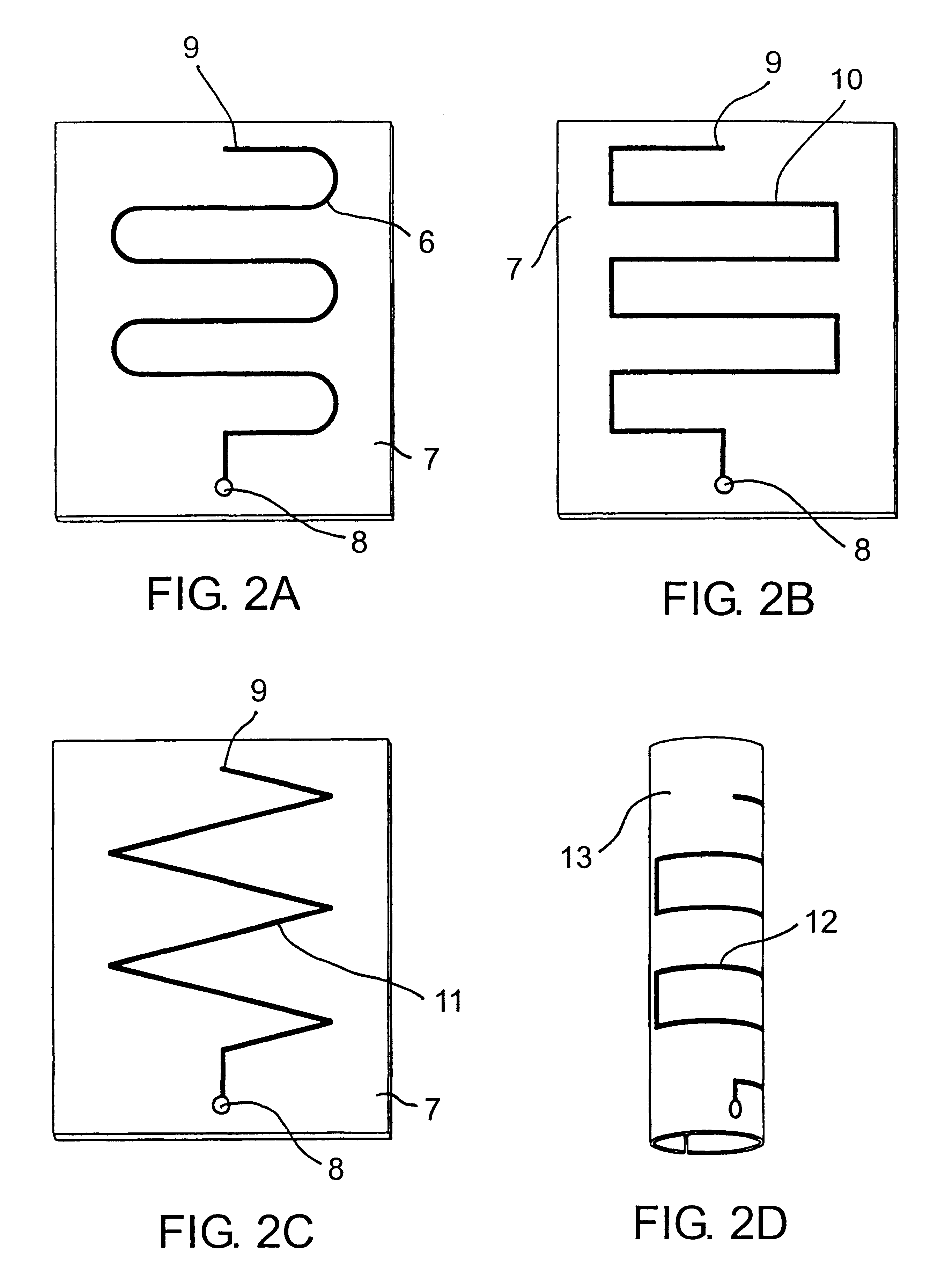Meander antenna device
a portable radio communication and antenna device technology, applied in the direction of collapsable antenna means, resonant antennas, independent non-interacting antenna combinations, etc., can solve the problems of reducing the height of a direction finder antenna, difficult and complicated manufacturing, and less efficient antennas
- Summary
- Abstract
- Description
- Claims
- Application Information
AI Technical Summary
Benefits of technology
Problems solved by technology
Method used
Image
Examples
Embodiment Construction
With reference to FIG. 1A, a meander radiating element 1 is carried by a dielectric cylindrical carrier 2 and mounted extending outwards on a chassis 3 of a hand portable mobile telephone 4. The position of the meander element 1 on the chassis 3 is selected such that radiation of the meander conductor 1 is transmitted and received effectively in different positions chosen by an operator during standby or during a telephone call. In FIGS. 1A-B the meander element is located at one side of a top portion of the chassis 3 projecting upwards.
Also shown in FIG. 1A is an extendable and retractable whip antenna 5 shown in its extended position. There may or may not be a whip antenna combined with the meander element, depending on the antenna performance required in a specific case. FIG. 1B shows the arrangement of FIG. 1A having the whip antenna in its retracted position.
FIG. 2A shows a first possible shape 6 of the meander radiating element being an etched conductor pattern on a dielectric...
PUM
 Login to View More
Login to View More Abstract
Description
Claims
Application Information
 Login to View More
Login to View More - R&D
- Intellectual Property
- Life Sciences
- Materials
- Tech Scout
- Unparalleled Data Quality
- Higher Quality Content
- 60% Fewer Hallucinations
Browse by: Latest US Patents, China's latest patents, Technical Efficacy Thesaurus, Application Domain, Technology Topic, Popular Technical Reports.
© 2025 PatSnap. All rights reserved.Legal|Privacy policy|Modern Slavery Act Transparency Statement|Sitemap|About US| Contact US: help@patsnap.com



